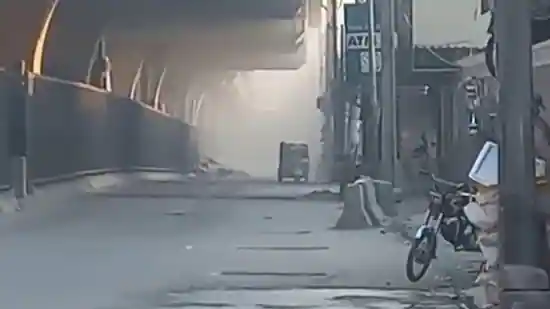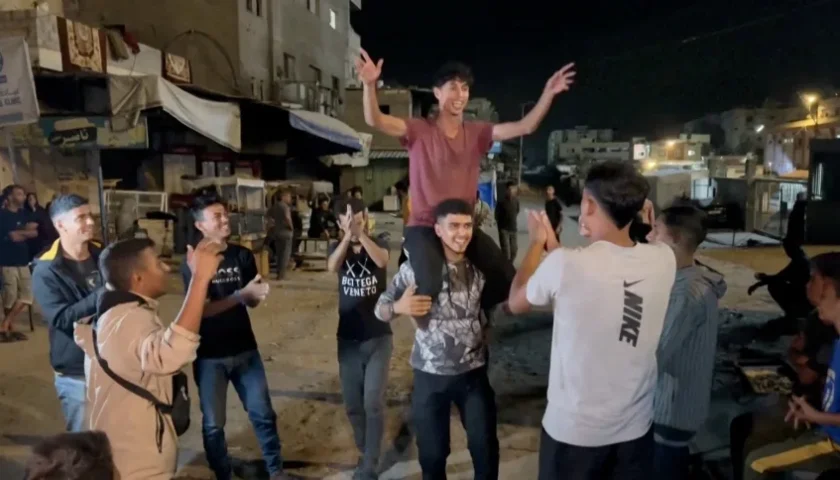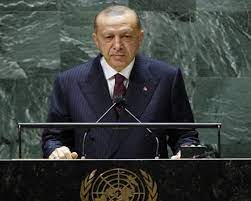Dateline: What Happened in the Early Hours of June 18?
At 04:58 local time (UTC+3:30), residents across central Tehran were jolted awake by a deafening blast. Within minutes, social media filled with shaky videos of orange fireballs climbing into the predawn sky. Israeli strikes on Tehran—the phrase that had loomed over the Middle East for years—was now a reality. Multiple secondary explosions followed, suggesting hits on ammunition depots. Air‑defence tracers lit the horizon, but no official siren system was activated in the capital, fueling confusion and fear.
Satellite imagery reviewed by open‑source analysts later in the day showed plumes rising from three coordinates: Khojir missile complex, Imam Hossein University, and a warehouse near Karaj. This opening salvo marked the sixth consecutive night of Israeli operations inside Iran but was the first direct strike on the capital since the Iran–Iraq War of the 1980s.
Operation Rising Lion: Israel’s Strategy & Target Profile
Launched on June 13, 2025, Operation Rising Lion is Israel’s codename for a sweeping air campaign aimed at degrading Iran’s nuclear latency and ballistic‑missile ecosystem. Sources tell Reuters that the IAF is employing F‑35I “Adir” jets, Rampage stand‑off missiles, and cyber‑EW integration to blind Iranian radars. Key objectives:
- Neutralise uranium‑enrichment capabilities at Natanz, Fordow, and Arak.
- Destroy command nodes linked to IRGC’s Quds Force.
- Signal deterrence to proxy militias in Lebanon, Syria, and Yemen.
Trump’s Ultimatum: “Unconditional Surrender” & Evacuation Warning
Hours before the raid, U.S. President Donald Trump—fresh from an abbreviated G7 summit in Canada—delivered a televised address:
“Tehran’s residents should evacuate. We demand Iran’s unconditional surrender of all nuclear assets.”
He claimed the U.S. had “complete and total control of the skies over Iran” and hinted at targeted strikes on leadership facilities, sparing Supreme Leader Ayatollah Ali Khamenei “for now.” Analysts view the speech as both a psychological warfare tactic and a contingency justification for deeper U.S. involvement.
Inside Tehran: Eyewitness Accounts of Predawn Explosions
As the city of Tehran trembled under Israeli airstrikes, ordinary citizens bore witness to a night of fear and confusion. Videos posted on Iranian social media platforms—before being swiftly taken down—captured the eerie glow of orange explosions and the wail of emergency vehicles in the aftermath.
One local resident, Maryam D., said:
“The ground shook violently. We thought it was an earthquake. The children were screaming. Then we saw the flames in the distance—it felt like war had entered our home.”
Many families rushed to underground parking lots, treating them as impromptu bomb shelters. There were reports of internet blackouts in several neighborhoods, as authorities likely attempted to control the narrative.
Tehran’s Silence: Iranian Government Messaging & Media Blackouts
Despite the magnitude of the attack, Iran’s official media remained conspicuously silent. No televised address from top leaders, no acknowledgment of casualties. This tactic mirrors past Iranian doctrine—deny and delay—intended to preserve public morale and project strength.
State broadcaster IRIB aired patriotic music and historical documentaries throughout the morning, prompting widespread public frustration. Independent Iranian journalists confirmed tight restrictions on media reporting, with several newsrooms receiving “non-publication” directives.
This communication vacuum has fueled a surge in rumors and misinformation, leaving citizens confused and increasingly distrustful.
War in Numbers: Casualties, Sorties & Missile Intercepts
As of June 18:
-
Iranian casualties: 224 confirmed dead, 500+ injured (semi-official figures).
-
Israeli air sorties: Estimated 45 missions flown in six days.
-
Missile interceptions: 15 out of 28 missiles intercepted by Iranian air defense.
-
UAV attacks: 9 drones used by Israel; 2 downed by IRGC.
The death toll is expected to rise, especially if communication infrastructure is further degraded. Hospitals in Tehran and Karaj have issued emergency appeals for blood donations, signaling the civilian toll is significant.
The Khojir & Imam Hossein Strikes: Why These Sites Matter
The Khojir missile complex, located east of Tehran, is central to Iran’s ballistic missile production. It was previously targeted by Israel in 2020 and 2023. Intelligence reports suggest recent upgrades had made it operational again.
Meanwhile, the Imam Hossein University—linked to the IRGC’s elite R&D wing—has served as a hub for drone warfare, cyber defense, and AI-assisted command systems. The targeting of this academic-military hybrid site signals Israel’s intention to undermine Iran’s future warfighting capabilities, not just current assets.
Air-Raid Sirens in Israel: Iranian Retaliation & UAV Threats
Hours after the Tehran strikes, air-raid sirens blared across Israel’s north and central regions. The IDF confirmed missile launches from Iran and UAV incursions from Iraqi and Syrian airspace.
Two Israeli civilians were reportedly killed in the town of Kfar Saba, and schools across Haifa, Acre, and the Golan Heights were closed indefinitely.
Iran’s Shahed drones—the same class exported to Russia—were intercepted midair by Israeli Iron Dome and Arrow-3 systems. Still, the psychological impact was palpable, with residents scrambling for bomb shelters.
U.S. Force Posture: Jets, Carriers & “Skies Under Control”
President Trump’s claim of “total control of Iranian skies” was backed by military movements:
-
The USS Dwight D. Eisenhower carrier group is now in the Gulf of Oman.
-
F-22 Raptors and B-2 stealth bombers were repositioned to Al Udeid Air Base in Qatar.
-
A separate contingent of Reaper drones and AWACS is conducting 24/7 surveillance.
Pentagon officials said the U.S. remains in a “defensive posture” but is prepared to retaliate if American forces or allies are directly attacked.
Evolution of Iran–Israel Tensions: A 40-Year Timeline
The conflict dates back to 1979, when Iran’s Islamic Revolution designated Israel the “Zionist enemy.” Notable escalations include:
-
2006–2020: Proxy wars via Hezbollah and Hamas.
-
2010–2015: Israel’s cyber-sabotage of Iran’s nuclear program (e.g., Stuxnet).
-
2021–2024: Series of covert assassinations of nuclear scientists in Iran.
Operation Rising Lion represents the first overt, full-scale military conflict between the two nuclear-threshold nations.
Nuclear Stakes: Israel’s Red Lines & Iran’s Capabilities
Israel’s justification hinges on preventing Iran from acquiring nuclear weapons. Experts estimate Iran’s breakout time for a bomb at 2–3 months. In response, Israel’s doctrine has long held that no nuclear Iran is tolerable.
Meanwhile, Iran denies it seeks weapons, claiming all enrichment is for peaceful purposes. Analysts note enrichment levels at 84% purity—well beyond civilian use.
The fear? A “nuclear domino effect” in the region, prompting Saudi Arabia, Egypt, and Turkey to pursue similar capabilities.
Khamenei’s Inner Circle: Loss of Key IRGC Commanders
Since the launch of Operation Rising Lion, at least four top IRGC commanders have been killed. Among them:
-
Brigadier General Hassan Mohseni, cyber warfare head.
-
Colonel Reza Tavakoli, UAV program director.
Insiders claim Supreme Leader Ayatollah Khamenei is increasingly isolated, relying on a shrinking pool of loyal advisors. This strategic decapitation is designed to weaken Iran’s retaliatory capacity and sow division within the regime.
Domestic Mood in Iran: Fear, Defiance & Economic Pain
Iran’s streets are tense but resilient. Inflation has soared past 60%, and with each passing hour, basic goods are becoming scarce.
Yet citizens are also displaying patriotic defiance. In Shiraz and Isfahan, spontaneous protests called for retaliation. Many also criticize the regime for provoking conflict, demanding transparency and reform.
Israeli Home Front: Civilian Casualties & Iron Dome Pressure
Israeli citizens are facing nightly barrages. The Iron Dome has intercepted dozens of missiles but not all. Casualties include:
-
24 civilians dead
-
89 injured
-
12 critical
Residents in northern Israel are experiencing evacuation fatigue, with many unsure whether to return home or flee south.
Global Reactions: UN, EU, G7 & Regional Powers
-
UN: Called an emergency session; Secretary-General condemned “disproportionate violence.”
-
EU: France and Germany urged immediate ceasefire, while Hungary backed Israel’s right to defense.
-
Russia: Condemned Israeli aggression; warned against U.S. escalation.
-
China: Advocated diplomacy and called for “mutual restraint.”
Diplomatic Chess: India, China, Russia & the Balancing Act
India, with deep ties to both Iran and Israel, is navigating a diplomatic tightrope. MEA sources confirm backchannel talks are ongoing. China is also mediating via Oman, while Russia pushes for a trilateral ceasefire forum.
This triangulation hints at a multipolar world order, where traditional U.S. dominance is no longer absolute.
Humanitarian Concerns: Hospitals, Sanctions & Aid Corridors
With medical supplies running low, NGOs are calling for humanitarian corridors. U.S. sanctions complicate aid deliveries, especially dual-use items like surgical equipment.
The Red Crescent has requested safe zones around hospitals, while Médecins Sans Frontières (MSF) warns of a healthcare collapse if bombings continue.
Oil Markets & Global Economy: Price Spikes & Supply Routes
Brent crude crossed $105/barrel, with fears of a Strait of Hormuz blockade driving prices. Insurance premiums on Gulf shipping lanes have spiked by 300%.
Global stock markets reacted with sharp volatility. European gas futures jumped 11%, while Asian economies brace for supply disruptions.
Cyber & Information Warfare: Hacks, Deepfakes & Propaganda
Both sides are engaged in intense information warfare. Israel launched counter-propaganda campaigns, while Iranian hackers took credit for DDoS attacks on Western news sites.
Deepfake videos purporting to show U.S. troop casualties went viral, later debunked. Disinformation is now a central weapon in shaping public opinion and international support.
Scenario Forecasts: Escalation, Ceasefire, or Regime Change?
Three key paths:
-
Escalation: Full regional war; Hezbollah and Houthis join; U.S. airstrikes inevitable.
-
Ceasefire: Diplomatic pause via Qatar or India; inspection-based de-escalation.
-
Regime change: Death of Khamenei prompts power shift—liberal or hardline.
Intelligence agencies are closely tracking succession dynamics and potential coup risks inside Iran.
Travel & Safety Advisory: What Foreign Nationals Must Know
Governments worldwide have issued Level 4 “Do Not Travel” alerts for Iran and parts of Israel. Evacuations via Dubai and Muscat are ongoing for dual nationals.
Travel insurers have invalidated most Iran policies, citing “active warzones.” Expats are advised to register with embassies and shelter in place.
Media Literacy Toolkit: Verifying War Footage in Real Time
With viral videos flooding timelines, media watchdogs urge basic verification checks:
-
Use reverse image search to debunk old clips.
-
Cross-check time zones and landmarks.
-
Beware of emotionally charged AI-generated content.
Responsible consumption of war news can reduce panic and misinformation spread.
FAQs: Reader Questions on the Iran–Israel War Answered
Q: Is World War III starting?
A: No, but risks of a wider regional war are high if escalation continues unchecked.
Q: Will oil prices stabilize soon?
A: Only if key shipping lanes remain open and a ceasefire emerges within weeks.
Q: Is the U.S. going to attack Iran?
A: Not yet. Posture is defensive, but options remain on the table.
Action Checklist: How NGOs & Diaspora Can Help
-
Donate to trusted relief organizations like MSF or ICRC.
-
Amplify verified stories from civilians, not just state narratives.
-
Lobby local lawmakers for diplomatic pressure and humanitarian aid access.
-
Diaspora communities should coordinate with embassies for evacuations and consular support.
Bottom-Line: The Road Ahead for a Region on Edge
The Israeli strikes on Tehran and Trump’s ultimatum have thrust the Middle East into its most precarious moment since the 1973 Yom Kippur War. With Iranian casualties mounting—official toll at 224, unofficial estimates higher—and Israel reporting 24 civilian deaths from retaliatory missile fire, the spiral of action‑and‑reaction shows no sign of abating.
Three scenarios loom large:
- Escalatory Spiral: Israel targets leadership bunkers; Iran unleashes proxies, drawing U.S. forces into direct conflict.
- Brokered Ceasefire: Quiet back‑channel diplomacy via Oman, Qatar, or India leads to a temporary halt, opening a window for IAEA inspections.
- Regime Shockwave: Death or displacement of Khamenei triggers internal power tussles, creating a vacuum that either moderates or radicalises Tehran’s stance.
Whatever unfolds, the human cost will be immense. The international community’s challenge is to pivot from reactive condemnations to proactive conflict‑mitigation, ensuring that the quest for strategic security does not trample the imperatives of human security.
“Wars begin where diplomacy ends,” an old aphorism notes. The task before world leaders is to restart diplomacy before the fires burning over Tehran engulf the wider region.




